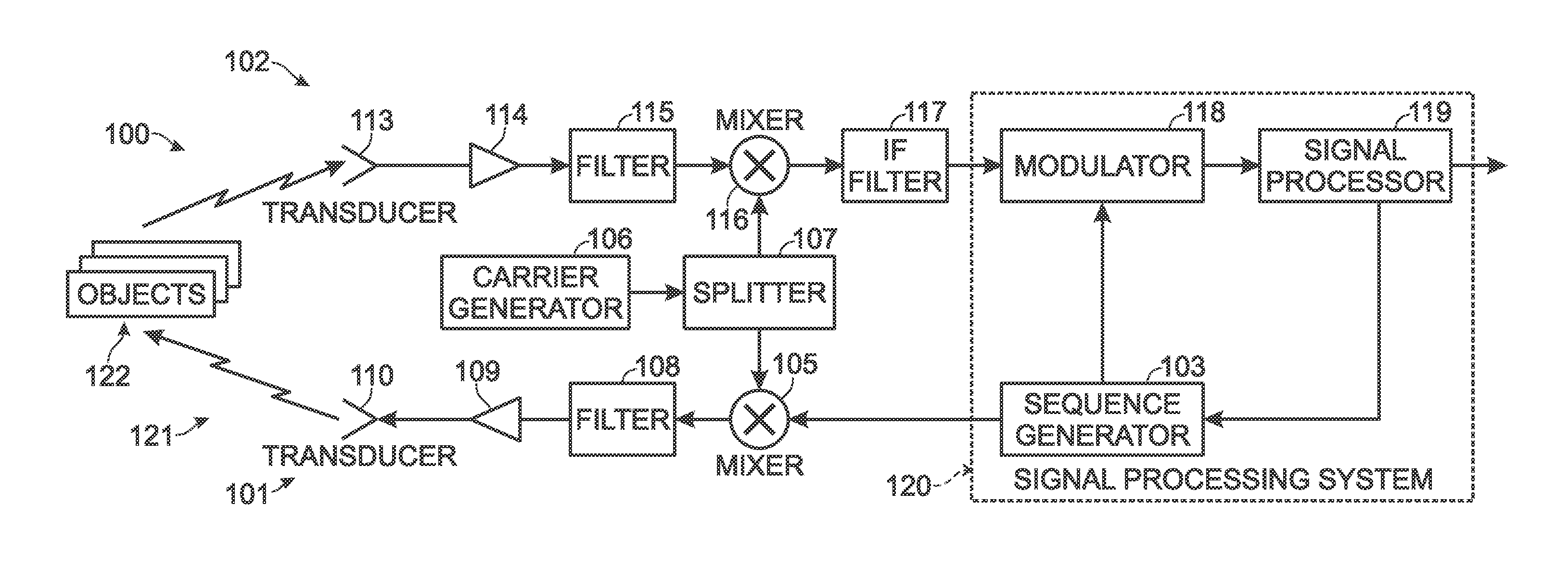Radar operation with enhanced doppler capability
a doppler capability and radar technology, applied in the field of radar systems, can solve the problems of reducing the unambiguous range capability, the method cannot characterize the complex spectra encountered in tornadoes, and the weather radar cannot characterize the velocity presen
- Summary
- Abstract
- Description
- Claims
- Application Information
AI Technical Summary
Problems solved by technology
Method used
Image
Examples
Embodiment Construction
[0031]Systems and methods are disclosed herein for echo-ranging simple or complex objects, whereby characteristics of echoes can be analyzed in a spectral domain to provide information on location, echo intensity, radial velocity, relative motion, and / or other properties of the objects.
[0032]FIG. 1 is a block diagram of an exemplary generalized system, shown generally at 100, for such echo-ranging with mono-static, bi-static, and / or multi-static operation. Echo-ranging system 100 may include a transmitter 101 and a receiver 102. Transmitter 101 may include an intermediate frequency (IF) sequence generator 103, a mixer 105, a carrier generator (or carrier frequency oscillator) 106, a splitter 107, a filter 108, an amplifier 109, and a signal transducer 110. Receiver 102 may include a transducer 113, an amplifier 114, a filter 115, a mixer 116, an IF filter 117, a modulator (e.g., a quadrature demodulator) 118, and a signal processor 119. In this example, the transmitter and receiver ...
PUM
 Login to View More
Login to View More Abstract
Description
Claims
Application Information
 Login to View More
Login to View More - R&D
- Intellectual Property
- Life Sciences
- Materials
- Tech Scout
- Unparalleled Data Quality
- Higher Quality Content
- 60% Fewer Hallucinations
Browse by: Latest US Patents, China's latest patents, Technical Efficacy Thesaurus, Application Domain, Technology Topic, Popular Technical Reports.
© 2025 PatSnap. All rights reserved.Legal|Privacy policy|Modern Slavery Act Transparency Statement|Sitemap|About US| Contact US: help@patsnap.com



